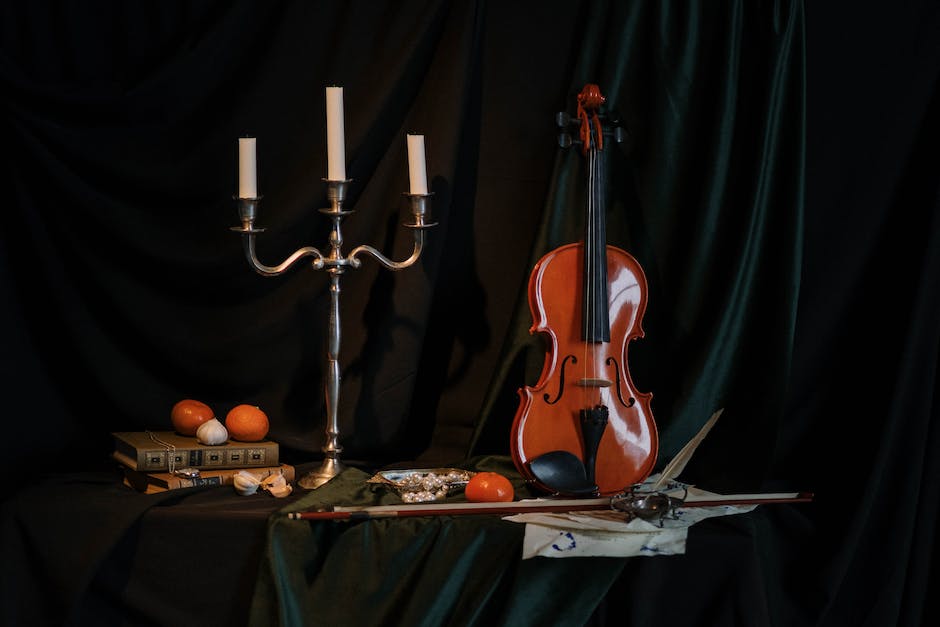Poetry can seem like a secret, with its own language and rules that first-time readers or writers might find confusing. But worry not! Once you start understanding the basics, poetry becomes not only interesting but also quite welcoming. Whether you’re new to reading poetry or looking to refresh your understanding, getting to know these foundational structures is your first step to truly appreciating and creating poetry. Let’s explore these key elements together!
Understanding Poetic Structure
Table of Contents
Unlocking the Secrets of Poetry: The Basic Structures You Need to Know
Poetry might seem like a world of its own, with its unique language and rules that can be puzzling at first glance. But fear not! Once you peel back the layers, you’ll find that the core structures of poems are not only fascinating but also incredibly accessible. Whether you’re a poetry newbie looking to dive into the world of verse or just brushing up on your knowledge, understanding these basic structures will elevate your poetry game. Let’s break it down!
- Lines and Stanzas
The most noticeable features when you first glance at a poem are the lines and the breaks between them, known as stanzas. Think of lines as sentences in prose but with much more freedom. Poets decide where a line ends to add emphasis, create rhythm, or simply stir emotions. Stanzas, on the other hand, are like paragraphs, grouping lines into sections to build ideas, control pacing, or shift tones. - Rhyme Scheme
Rhymes aren’t just for nursery rhymes—poets love them too! The rhyme scheme of a poem is the pattern in which end words rhyme, usually marked by letters (ABAB, AABB, etc.). Rhymes can create musicality, make lines more memorable, and weave a sense of unity through the poem. But not all poems rhyme; many modern poets ditch rhyme schemes for free verse, where imagination is the only limit. - Meter
Ever notice how some poems have a sing-song quality? That’s all thanks to meter—the rhythmic structure determined by stressed and unstressed syllables in a line. There are many types of meters (iambic pentameter, anyone?), but don’t get hung up on the technical names. Feel the beat as you read a poem out loud; you’ll start to notice patterns that give the poem a heartbeat. - Free Verse vs. Formal Verse
Here’s where poetry throws a curveball. Not all poems follow a strict pattern. Free verse poems eschew traditional rhyme and meter, giving the poet total freedom in crafting their piece. Meanwhile, formal verse sticks to specific patterns and structures (sonnets, haikus, limericks—oh my!). Each style offers its own charm, challenging poets to either play within the bounds or break free entirely. - Imagery and Figurative Language
Although not a structure in the strict sense, the use of imagery and figurative language is the backbone of poetry’s expressive power. Metaphors, similes, and vivid descriptions transform words into vivid scenes, emotions, and ideas, making the poem an immersive experience for the reader. - Sound Devices
Alliteration, assonance, consonance—these are the tools poets use to create a symphony of sounds within their poems. Beyond rhyme, these devices contribute to the musicality of a poem, echoing emotions and highlighting key themes through repetition and rhythm.
To wrap it up (forgive me for sneaking in a mini-summary), diving into poetry’s basic structures is like unlocking a treasure chest. Behind the lines, stanzas, and rhyme schemes lies a world rich in emotion, sound, and imagery waiting to be explored. Whether you’re penning your own verses or appreciating the works of others, understanding these foundations will enrich your poetry journey. And who knows? You might just find yourself inspired to break the rules and create something uniquely yours. Happy writing and reading!

Discovering Your Poetic Voice
Finding Your Unique Poetic Voice: A Simple How-To Guide
Diving into the heart of poetry, you might wonder how you can stand out with a voice that’s unmistakably yours. It’s crucial because your unique poetic voice is like your signature – it distinguishes your work from the sea of poets out there. Let’s break down the steps to uncover and refine that one-of-a-kind voice lurking within you.
- Read, Read, and Read Some More
- Write Without Fear
- Experiment with Perspectives
- Embrace Your Weirdness
- Seek Feedback (But Not Validation)
- Refine and Repeat
The first secret ingredient? A voracious appetite for reading. But don’t just stick to your favorites. Explore a buffet of styles – from the classic giants to contemporary maestros, across cultures and time periods. Notice how each poet’s voice varies; some might whisper while others shout from the rooftops. This isn’t about copying but collecting a treasure trove of influences that will mix and morph inside you.
Grab your pen or keyboard and dive in without hesitating. Write about anything and everything – the mundane coffee cup on your desk, the last conversation you had, or the star-filled sky you can’t see from your window. Don’t worry about sounding “poetic” or getting it right. This phase is about letting your thoughts and feelings spill out raw and unfiltered.
Tired of seeing the world through your eyes? Flip the script. Try writing from the perspective of someone else – a historical figure, a household item, or even an emotion personified. This practice not only stretches your imagination but also helps you discover new voices and tones you might not have realized you had.
What quirks or interests do you have that most people don’t? Perhaps you’re fascinated by the lore of ancient civilizations, or you find beauty in the mathematics that others dread. Use these unique bits of you as a foundation. Your “weirdness” is a goldmine for a voice that stands out.
Once you’re comfortable with putting your work out there, seek feedback from peers, mentors, or writers’ groups. Notice we said feedback, not validation. The purpose here isn’t to get a pat on the back but to understand how your voice is received by others and how it can be refined. Critiques can be gold, offering new angles and insights into your work.
Finding your voice isn’t a one-and-done deal; it’s a continuous journey. With every poem you write and revise, you’re one step closer to sharpening that unique voice of yours. Pay attention to the themes you gravitate towards, the words that feel like “home,” and the rhythm that feels like your heartbeat. This is your voice emerging from the cocoon.
Your poetic voice is somewhere between what’s uniquely you and how you see the world – it’s personal, it’s intimate, and it’s begging to be heard. Remember, it’s not just about how you write but what you breathe life into through your words. Keep nurturing it, and soon, you’ll not just find but own your unique poetic voice.
And there you have it. Peel away the layers, write with heart, and let your poetic voice soar. Remember, every poet’s journey is unique – cherish yours and watch as your voice unfolds and leaves its mark on the world. Happy writing!

The Art of Imagery and Metaphor
How to Effectively Use Imagery and Metaphor in Your Poems
Looking to take your poetry writing to the next level? Imagery and metaphor might just be your new best friends! Let’s break it down so you can start crafting some seriously eye-catching, mind-bending, heart-melting poetry.
1. Crafting Killer Imagery
Imagine your words painting a picture so vivid, your readers feel like they’re living inside your poem. Here’s how:
- Be Specific: Don’t just tell us it’s a flower. Is it a sun-kissed daisy swaying gently in the summer breeze? The more specific you are, the better the imagery.
- Engage the Senses: Dive into all five senses. The tang of salt on the air at the beach isn’t just something to smell; it’s a taste that reminds you of biting into a crisp apple on a fall day.
- Show, Don’t Tell: Spot a beautiful moment? Show us through imagery. Instead of saying “The night was quiet,” paint us a picture like “The moon whispered through the hush of the dark, silencing even the crickets.”
2. Mastering the Art of Metaphor
Metaphors give your poetry depth and can turn a simple poem into a puzzle that readers delight in solving. Here’s how to use them effectively:
- Link Unrelated Things: Your heart isn’t just happy. Maybe it’s a balloon tugging at the strings, eager for the sky. Connecting unrelated things in a metaphor sparks intrigue and paints a memorable picture.
- Avoid Clichés: “Time is a thief” is worn out. Try something fresh, like “Time is an impatient baker, kneading away at our lives.” Be creative and original with your metaphors.
- Subtle Integration: Sometimes, less is more. Integrating your metaphor subtly across your poem can be more impactful than stating it outright. Let readers uncover it like a hidden treasure.
3. Practice and Play
- Mix and Match: Play around with different imagery and metaphors. Describe anger as a thunderstorm or joy as a sunrise. See what fits and what resonates with you and your readers.
- Read Widely: Consume poetry like it’s your job. Notice how other poets use imagery and metaphor. What works? What doesn’t? Use this insight to refine your own writing.
- Experiment: Poetry is your playground. Try describing the same scene or emotion in several different ways using various imagery and metaphors. This not only flexes your creative muscles but helps you understand what style suits you best.
4. Feedback is Gold
- Get Feedback: Share your imagery and metaphor-filled poems with friends or join a poetry group. Fresh eyes can catch what you might have missed and offer new perspectives.
Remember, using imagery and metaphor effectively in your poetry is like adding spice to your favorite dish – it can dramatically enhance the flavor and make your work unforgettable. Get creative, be daring, and don’t be afraid to experiment. Your poetry will thank you for it, and who knows? Your words might just resonate with someone on a level you never imagined possible. Here’s to writing poetry that sticks with readers long after they’ve finished reading!

As we wrap up our exploration of poetry’s building blocks, remember that understanding these elements is your gateway to both appreciating and crafting meaningful poetry. Whether it’s the rhythm of the lines, the music of the rhymes, or the vividness of imagery, each aspect plays a crucial role in bringing a poem to life. So, keep experimenting with these tools in your writing or reading. Poetry holds a world rich with emotion, sound, and picture-ready to be explored. Use your newfound knowledge as a launchpad to explore deeper, write boldly, and find delight in the world of poetry. Here’s to unleashing the power of your words and letting your poetic creations shine!

I’m Dave, a passionate advocate and follower of all things AI. I am captivated by the marvels of artificial intelligence and how it continues to revolutionize our world every single day.
My fascination extends across the entire AI spectrum, but I have a special place in my heart for AgentGPT and AutoGPT. I am consistently amazed by the power and versatility of these tools, and I believe they hold the key to transforming how we interact with information and each other.
As I continue my journey in the vast world of AI, I look forward to exploring the ever-evolving capabilities of these technologies and sharing my insights and learnings with all of you. So let’s dive deep into the realm of AI together, and discover the limitless possibilities it offers!
Interests: Artificial Intelligence, AgentGPT, AutoGPT, Machine Learning, Natural Language Processing, Deep Learning, Conversational AI.



